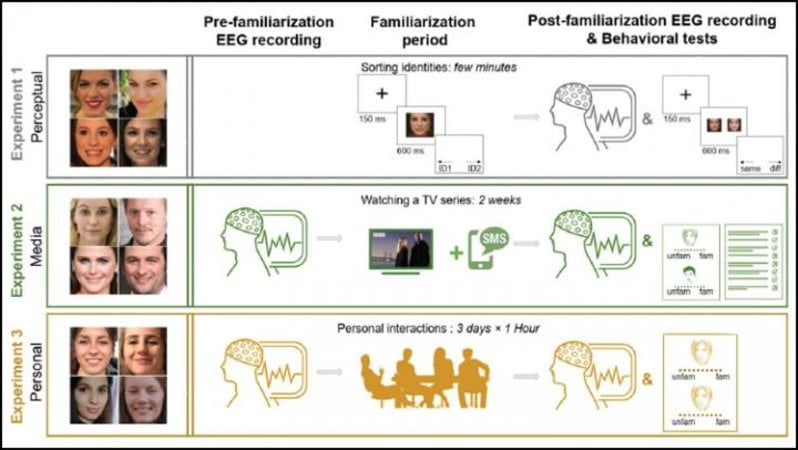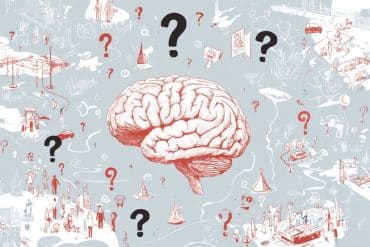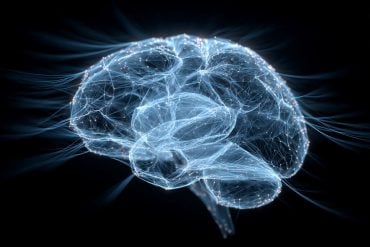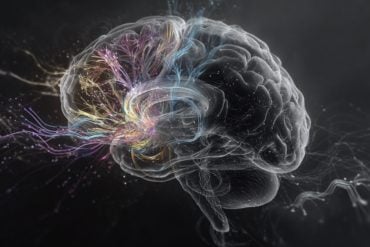Summary: In-person interactions strengthen neural signals related to facial recognition.
Source: SfN
The neural representation of a familiar face strengthens faster when you see someone in person, according to a new study published in Journal of Neuroscience.
The brain loves faces — there’s even an interconnected network of brain areas dedicated to face-processing.
Despite all the research on how the brain sees faces, little is known about how the neural representation of a face changes as it becomes familiar.
To track how familiarity brain signals change, Ambrus et al. measured participants’ brain activity with EEG before and after getting to know different faces.
Participants were exposed to faces in one of three ways: perceptual exposure (a sorting game), media exposure (watching a TV show), and in-person (chatting with lab members). A jolt of brain activity appeared on the EEG around 400 milliseconds after viewing a face; the strength of the signal was tied to the familiarity of the face.

The type of exposure affected how much the signal changed: in-person exposure strengthened it the most, followed by media exposure. Perceptual exposure had very little impact on the familiarity signal.
These results emphasize the importance of in-person interactions when getting to know new people.
About this facial recognition research news
Source: SfN
Contact: Calli McMurray – SfN
Image: The image is credited to Ambrus et al., JNeurosci 2021
Original Research: Closed access.
“Getting to know you: emerging neural representations during face familiarization” by Géza Gergely Ambrus, Charlotta Marina Eick, Daniel Kaiser and Gyula Kovács. Journal of Neuroscience
Abstract
Getting to know you: emerging neural representations during face familiarization
The successful recognition of familiar persons is critical for social interactions. Despite extensive research on the neural representations of familiar faces, we know little about how such representations unfold as someone becomes familiar.
In three EEG experiments on human participants of both sexes, we elucidated how representations of face familiarity and identity emerge from different qualities of familiarization: brief perceptual exposure (Experiment 1), extensive media familiarization (Experiment 2) and real-life personal familiarization (Experiment 3).
Time-resolved representational similarity analysis revealed that familiarization quality has a profound impact on representations of face familiarity: they were strongly visible after personal familiarization, weaker after media familiarization, and absent after perceptual familiarization.
Across all experiments, we found no enhancement of face identity representation, suggesting that familiarity and identity representations emerge independently during face familiarization.
Our results emphasize the importance of extensive, real-life familiarization for the emergence of robust face familiarity representations, constraining models of face perception and recognition memory.
SIGNIFICANCE STATEMENT
Despite extensive research on the neural representations of familiar faces, we know little about how such representations unfold as someone becomes familiar.
To elucidate how face representations change as we get familiar with someone, we conducted three EEG experiments where we used brief perceptual exposure, extensive media familiarization or real-life personal familiarization.
Using multivariate representational similarity analysis, we demonstrate that the method of familiarization has a profound impact on face representations and emphasize the importance of real-life familiarization.
Additionally, familiarization shapes representations of face familiarity and identity differently: as we get to know someone, familiarity signals seem to appear before the formation of identity representations.






